*This story has been updated from an earlier version
Falling currencies, blocked supplies into Crimea and Sevastopol, confusion over new border and customs, and uncertain taxes are making the situation for production and distribution volatile across Russia and Ukraine.
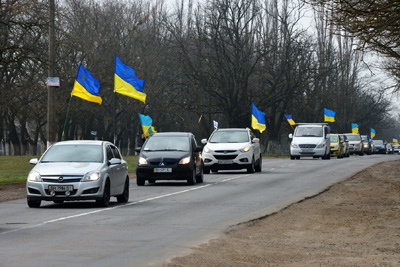
It has been a tumultuous year in Ukraine and Russia following widespread protests that led to a change of government in Kiev, and the ensuing crises in Crimea and eastern Ukraine. Along with the violence and unrest, the growing confrontation between Russia and western countries is already having negative impacts on vehicle markets and supply chains in the region. Sales are likely to be hit by currency drops and capital flight, but there are also transport and supply blockages, vehicle theft, official and unofficial blockades that are rubbing salt into the wounds.
Regulatory and duty changes have added more confusion, with taxes and charges constantly being revised. Indeed, our recent feature attempting to pick apart some of the changing rules and regulations fell out of date just a few weeks after publication.
In Ukraine, the recent election of a new president, Petro Poroshenko, may help eventually calm the situation, but also adds further complications. Poroshenko, as well as being a chocolate magnate, is a former owner of Bogdan, a car manufacturer in Ukraine. Sources say that he understands the automotive business very well, however he will be caught between two nearly irreconcilable positions – the interest of Ukrainian manufacturers and distributors, who are keen to maintain market protection, or the interests of foreign investors, who are currently helping to save the country’s ruined economy.
Most forecasts across Russia and Ukraine call for further falls this year, particularly for imported vehicles. Some carmakers in Russia and Ukraine have already halted production or announced that they will slow output. Meanwhile, plans by several Chinese OEMs to build complete knockdown kit (CKD) plants in Ukraine could be in doubt.
Such impacts might be minor compared to worst-case scenarios, including a deepening civil war in Ukraine or even all out war with Russia. The Russian government has already threatened that, in the event of extremely harsh economic sanctions by the US and EU, it could nationalise the property of some western companies, which should be very worrying to American and European manufacturers with large facilities and assets in Russia (although such an extreme measure is still somewhat remote, considering that sanctions have not yet moved much beyond targeting rich individuals in Russia and Ukraine).
Severe market disruptions
The Russia-Ukraine crisis has risks for the entire post-Soviet Union region, as all of these economies are closely connected. Both the rouble and the Ukrainian hryvnia have fallen substantially, which increases the price of imports. Russia has already raised interest rates in response, which will further weaken the consumer market. The latest forecast from IHS Automotive projects Russian light vehicles sales to fall by 7% this year to around 2.59m units. The Ukrainian Association of Automobile Importers and Dealers (VAAID) predicts that the Ukrainian market may decrease by 30% this year to 140,000 units.
Although the major vehicle sales impacts may be down to falling currencies and weak economics, there are also supply disruptions. According to analysts at IK Veles Capital, some companies are already considering suspending the supply of vehicles to Ukraine and the same steps may be taken in Russia.
Although the Crimean peninsula is not a major market – it has 40 dealers, according to Oleg Nazarenko, CEO of VAAID – it nevertheless encapsulates the fallout from the crisis. At various points in recent months, supply lines of vehicles and spare parts to dealers in both Crimea and Sevastopol have effectively been cut off altogether, according to Mikhail Smolyanov, deputy of the State Council of Crimea and president of the Avtodel dealer group.
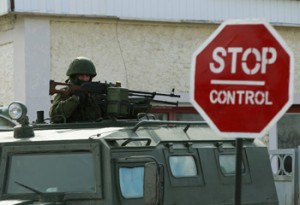
According to Smolyanov, Crimean dealer inventories fell to zero in April, and because of the lack of sufficient transport infrastructure, Russia failed to replace it.
In May, the Russian Ministry of Economic Development sent an open letter to all carmakers asking them to begin deliveries of cars to the Crimea from their Russian sites, according to Andrei Sokolov, director of the department of special economic zones projects of regional development. According to Sokolov, Crimean officials asked Russian authorities for assistance after vehicle deliveries stopped.
Sokolov says that some carmakers, prior to the crisis, already sold cars to Ukraine via Russian sales organisations. Poor sales in Russia are also likely to mean higher inventories of finished vehicles, which could be transferred. "Now we have to establish a system whereby Crimea will be supplied from Russian dealers directly,” he adds.
The situation is not so simple for many western carmakers, however, as a large part of the international community considers Crimea as “occupied territory”, prohibiting many from working there. A source at one, large carmaker, who has requested anonymity, says that US and EU authorities have “unofficially” warned carmakers to avoid doing business in the Crimea peninsula.
However, the Russian Ministry of Economic Development has already received responses from some companies who are considering how they might honour the request. Kia is already moving cars to Crimea from Russia, according to Sokolov.
"Ukrainian importers are ready to supply cars to the Crimea, but Russian customs will not let them into the peninsula...custom clearance on the new Ukraine-Crimea border has not yet been established" - Oleg Nazarenko, Ukrainian Association of Automobile Importers and Dealers (VAAID)
A spokesperson from Volkswagen confirmed that it received the letter from the Ministry, but the carmaker still has not defined its position on the matter. A spokesperson from Renault declines to comment, while an official at Hyundai says that the company did not receive such a letter (which is curious since its sister company, Kia, is apparently complying with it).
According to VAAID’s Nazarenko, the lack of supply could at least partly be addressed from Ukrainian distributors, but Russia has also blocked this route. “Ukrainian importers are ready to supply cars to the Crimea, but Russian customs will not let them into the peninsula,” he says. “They refer to the fact that the cars can not be customs cleared since the processes of custom clearance on the new Ukraine-Crimea border has not yet been established”.
On the other hand, according to Nazarenko, some importers in Crimea also refuse to cooperate with Russian authorities, protesting the annexation of the peninsula.

The recent spike of violence in the eastern regions of Ukraine is also disrupting the automotive business, according to local experts. In particular, there are reportedly bands of criminals in Donetsk and Lugansk Oblasts supporting neither Kiev authorities nor the separatists, but are robbing and looting shops, including car dealers and vehicle yards.
“Because of car thefts from stores in Donetsk and Gorlovka the delivery of cars stopped not only in Ukrainian cities where the fighting between pro-Russian separatists and the Ukrainian army are taking place, but in the entire region, since the situation is risky,” says Nazarenko. He adds, however, that dealers have been pooling security resources to help defend one another from potential looters.
According to the Oleg Omelnitsky, director of Ukraine analytic agency AutoConsulting, dealers in eastern cities are also trying to hide vehicle inventories. "It is dangerous to keep the car in buildings with glass windows, so the remaining machines are hiding in basements, garages, warehouses,” he says. “This is especially true for Donetsk."
A chastened Russia
Ukraine is not alone in suffering; the Russian market is also expected to take a hit. Although sales were down only 2% in the first quarter of the year, the falling rouble and other economic pressures appear to be leading to an accelerating decline. Sales in April fell by 7% compared to 2013.
One segment expected to suffer in particular for Russia is light commercial vehicles, for which sales could decline by 15-20%, according to Paul Sereda, the director of the development division at the GAZ Group, Russia’s leading LCV maker. He believes, however, that local brands and those with high levels of localisation will fare better.
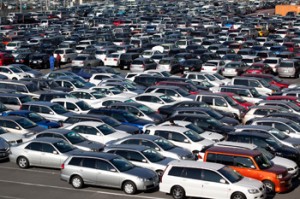
Officials from Renault, which also has a higher level of localisation for its Russian production, have also cited similar protection. So far Renault is down 5% in the first four months of the year, while alliance parter Nissan is up 30%. Lada, also controlled by Renault Nissan, has declined by 15%, which suggests that localisation will not be the deciding factor in Russia this year.
Along with price and supply issues, some brands may see more extreme drops because of so-called ‘consumer patriotism’. For western Ukraine, that means abandoning the purchase of Russian-made products, including cars. In Russia and eastern Ukraine, some organisations have called on citizens to abandon the purchasing of American products. Some analysts have predicted that brands like General Motors and Ford could see sales fall by 30-35% in Russia this year.
Ford sales have already been affected, dropping 30% through April this year, while GM is down around 8%. Ford and its joint venture partner in Russia, Sollers, will idle Russian plants later this year. GAZ, which builds passenger cars for GM and VW along with its own-brand LCVs, has switched to a four-day week until mid-summer, along with a three-week shutdown. Experts believe such measures are justified, given the experience of the 2009 crisis, when Russian automotive dealers struggled with high levels of inventory after sales dropped 50%.
"We think that the domestic brands will cut sales slower than the market in general...Given the fact that GAZ has a very high level of localisation, we can keep prices stable." - Paul Sereda, Gaz Group
Representatives of VW and BMW also confirm that the situation is complicated, and the Russian and Ukrainian markets remain volatile. However, carmakers have yet to make clear how they might change their medium or long-term strategy. Many have already committed to higher production and increased localisation in Russia over the next years to meet government-agreed mandates in exchange for zero import duties. Companies ranging from Renault Nissan to tier supplier Magna and logistics provider Gefco have said they will not change course.
Ukraine overhauls duties...again and again
Issues over car imports have actually been playing a role in Ukrainian unrest since last year, when protesters criticised special duties and recycling fees that the previous government had imposed – and which a shelved trade agreement with Europe would have also cancelled. Within the wider ‘Maiden’ movement, an ‘AvtoMaidan’ group has blocked roads and buildings with vehicles. Among the group’s demands has been a call to cancel these extra taxes. The members of this movement have continued to rally against such duties since the fall of the old government, including in March when about 1,500 people protested outside the parliament building following rumours that the new government would not revise the duty policy.
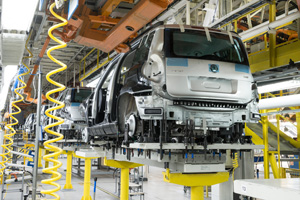
However, these cuts were largely offset with tax increases elsewhere. Starting in April, Ukraine increased its excise duty on new cars and motorcycles with engines larger than 0.5 litres. It also imposed an excise tax on motorcycle engines smaller than 0.5 litres, which had not previously been subject to the tax.
Although locally assembled vehicles were not expected to be hit with any increases, at the last minute the Ukrainian parliament also doubled the excise tax rate on car bodies, which impacts CKD producers. Furthermore, the new government has increased the fee for the first registration of vehicles by 8.3% compared to the prior rate. Finally, imported diesel fuel will be subject to a uniform excise rate of €98 (UAH 1,580, $133) per tonne (versus a rate that varied based on sulphur content that had been €46 per tonne on average).
Under the new excise rates, the import of each new car body will carry €218 in taxes. Importing a finished vehicle with an engine larger than 2.2 litres will cost €2,860 – twice as high as before April – while engines larger than 3 litres will double to €6,540. (See chart below for price impacts)
Experts say that the authorities had tried to compromise between AvtoMaidan and Ukrainian carmakers, whose executives feared that the immediate lifting of special duties would damage their positions.
AvtoMaiden protesters expressed disappointment with the current reform of the taxes. While the overall price of vehicles will drop, assuming that distributors pass on the import costs to consumers, they will still be higher than before the 2013 duties were imposed. For some types of cars, such as foreign models assembled by CKD, prices will rise further still.
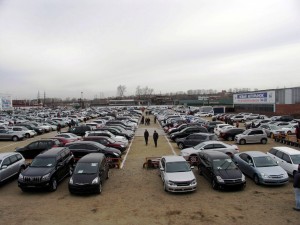
“Once again we see that the government understands only a position of strength,” he adds. “The members of parliament have the instincts of self-preservation. It is one thing not to vote when businesses are asking you, and another not to vote for the abolition of the utilisation fee when you know that close to the building there about 1,500 hungry and tired people waiting for such a decision,” he notes.
The Poroshenko government will face the same conflicts, which may make efforts to move closer to the EU and the West all the more difficult. The larger carmakers in Ukraine have already lobbied for the government to postpone the creation of any free trade zone with the EU, fearing that it will lead to the collapse of the national car industry. At the same time, Ukraine has already had to comply with IMF mandates to receive bailout money, which has included avoiding subsidies to domestic manufacturers and cancelling protectionist policies.
Further complications could come from regulation aimed against Russia. For example, Ukraine has discussed cancelling an agreement with Russia that eliminates the basic 10% duty for vehicles and CKD imports, which would impact popular models built in Russia including Lada, as well as the Volkswagen Polo, Hyundai Accent, Kia Rio, Peugeot 408 and Renault/Dacia Duster. In such cases, foreign carmakers could change the supply point of their vehicles, such as Renault supplying Ukraine from Romania.
However, such a move by Ukraine would likely trigger Russia to suspend its 0% duty for Ukrainian imports, reverting to Russia’s standard 25% duty – an increase that would close the market altogether for any of the vehicles Ukraine exports to Russia.
Asian brands gain market share
Meanwhile, Asian brands look set to fair somewhat better this year than their American or European counterparts. Kia Motors Rus plans to sell over 200,000 units in Russia, slightly more than last year. Both Hyundai and Kia sales were up around 1% in the first four months this year compared to last year. Toyota also does not expect any problems at the Russian market this year – indeed, its sales were up 12% through April.[sam_ad id=6 codes='true']
Chinese brands have also made headway recently in Russia. In 2013, Lifan, Geely and Great Wall grew sales versus 2012 by 34%, 55% and 39%, respectively. In the first four months of this year, Chery sales grew 8%, Lifan 5%, while Geely was stable, all at around 6,500 vehicles.
However, Ivan Bonchev, managing partner of EURussia Partners, a consultancy, believes that almost all car manufacturers will face problems in the Russian market this year. "In the past year, almost all manufacturers in Russia increased the volume of production and a large number are currently waiting to sell out its stocks,” he says. “This process should be completed by late spring or early summer, and than the prices will jump [because of the weak rouble] which will ruin the demand.”
Additional reporting by Christopher Ludwig.
| Car model | Engine capacity (litres) | Taxes that have changed | Price before reforms UAH | Price post reforms* UAH |
| Daewoo Matiz | 0.8 | Excise duty, utilisation fee | 62,000 ($5,445) | 57,437 ($5,035) |
| ZAZ Lanos | 1.5 | Excise duty on bodies for CKD | 81,000 | 82,612 |
| Renault Logan | 1.2 | Excise duty, utilisation fee fee, special duty | 133,373 | 124,033 |
| Lada Largus | 1.6 | Excise duty, utilisation fee fee, special duty | 122,370 | 110,923 |
| Skoda Rapid | 1.2 | Excise duty on bodies for CKD | 153,155 | 154,767 |
| Volkswagen Passat | 1.8 | Excise duty, utilisation fee, special duty | 368,969 | 346,832 |
| Toyota Camry | 2.5 | Excise duty, utilisation fee | 370,419 | 359,742 |
| Hyundai Santa Fe | 2.4 | Excise duty, utilisation fee | 316,200 | 305,944 |
| BMW X5 | 3.0 | Excise duty, utilisation fee | 810,000 | 797,187 |
| Toyota Land Cruiser Prado | 2.7 | Excise duty, utilisation fee | 472,826 | 461,292 |
| Mercedes-Benz S Class | 5.5 | Excise duty, utilisation fee | 1,259,442 | 1,330,548 |
*Price change if dealers were to pass on all changes in duty and excise tax

























![Global[1]](https://d3n5uof8vony13.cloudfront.net/Pictures/web/a/d/s/global1_726550.svgz)









